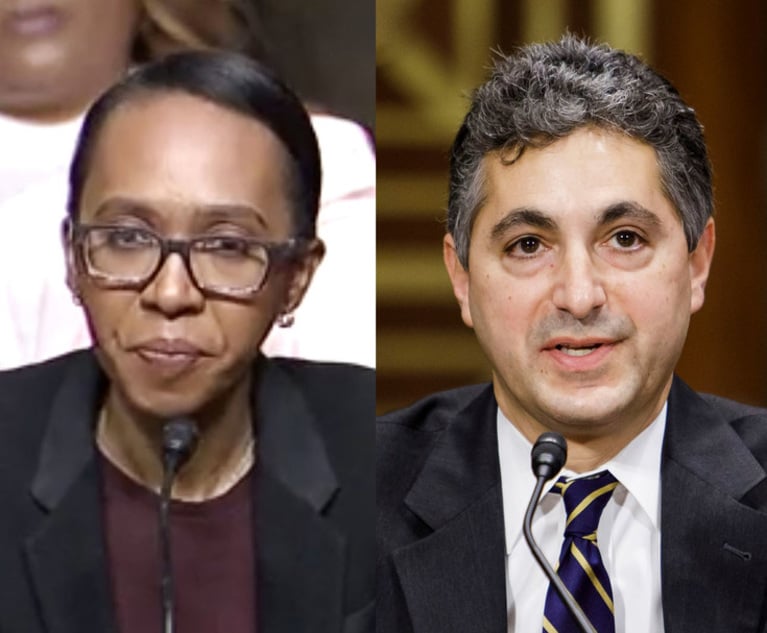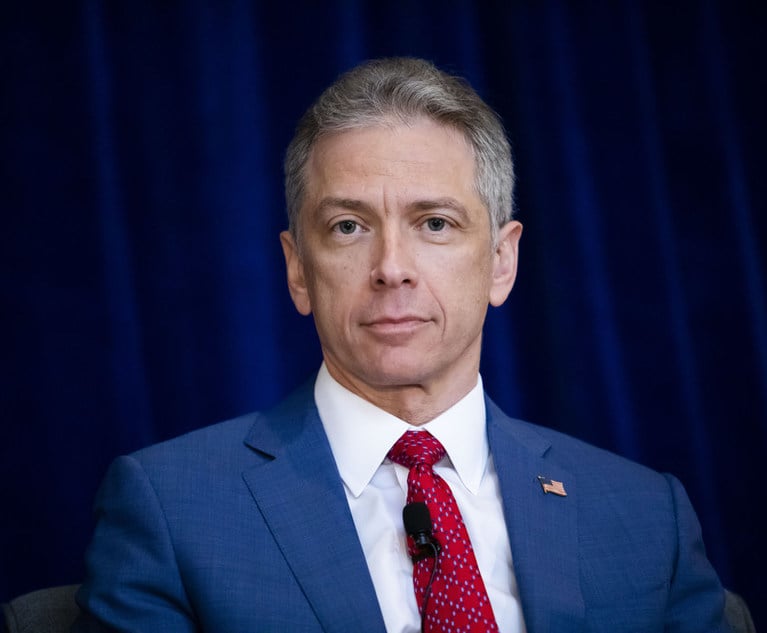Skilled in the Art: Would Open IP Law Stifle COVD-19 Innovation? + MoFo and Cadwalader to Duke It Out at Federal Circuit + Who's Repping Fortinet, Synopsys and Real Intent?
BIO makes its pitch for maintaining strong IP rights around COVID-19 therapies.
May 29, 2020 at 04:31 PM
10 minute read
Welcome to Skilled in the Art. I'm Law.com IP reporter Scott Graham. Here's what's cracking today:
• BIO makes its pitch for maintaining strong IP rights around COVID-19 therapies.
• "The kids" from MoFo and Cadwalader take a dispute over vascular ports to the Federal Circuit.
• Who got the work in two hot Silicon Valley competitor cases?
As always, you can email me your feedback and follow me on Twitter.

Will Bad Pandemics Make Bad IP Law?
We've had some discussion in recent weeks about the Open-COVID pledge, wherein a number of tech companies have pledged to license their IP free of charge for use in ending the COVID-19 pandemic. Today, I'm presenting the other side of that debate—the idea that robust IP rights are critical for incentivizing the development of a vaccine or effective treatment.
The Biotechnology Innovation Organization has launched a COVID-19 Therapeutic Development Tracker, an interactive tally of the hundreds of drugs in development worldwide. That level of innovation doesn't happen without IP rights, says Tom DiLenge, BIO's head of advocacy, law and public policy.
I spoke with DiLenge this week about the COVID-19 Emergency Manufacturing Act, legislation sponsored by Sen. Elizabeth Warren and Rep. Jan Schakowsky that would authorize the federal government to manufacture medical products to combat the pandemic. The discussion has been edited for length and clarity.
Q. What's happening right now with the COVID-19 Emergency Manufacturing Act? A. There is a small group of policymakers on Capitol Hill that for whatever reason is intently focused on trying to undermine intellectual property at the exact moment when we don't want to do that. These bills, and all these proposals that we've seen for months, they don't go anywhere, but they do take up oxygen, they certainly influence the perception of companies and investors as to what Washington is really thinking.
Do they want hundreds of companies working on more than 400 COVID drug development programs right now, invest all this time and energy, stop doing other programs for cancer and rare diseases, and shift all their attention to the gravest public health threat that we face in almost a century? Do we want them doing that, or do we want them worrying about this small band of Congressmen and women that seem intent on stealing intellectual property rights if we are successful in getting a product that can work?
Our chances of success are small with any given project, and it is so incredibly important that we have over 400 drug development programs going on right now, all of which have been launched since basically February. All of our focus as a Washington, D.C., policy community should be on how do we accelerate those efforts.
Q. Is there anything specifically in the bill that gives the government and manufacturers what they don't already have under [28 U.S.C.] Section 1498? A. It does go beyond Section 1498 in a couple of respects. I believe that if we're reading it correctly, [the government] could give out licenses for the broad commercial market. It would not have to be specifically for government use. With vaccines, normally the history is that the government ends up purchasing vaccines for pandemics. But for the therapeutics, a lot of those are distributed through the normal commercial marketplace. So this bill, if we're reading it correctly, would go beyond 1498 in that regard.
It's also not tied in any way to Bayh-Dole, meaning public funding. A lot of the argument you hear is that the government is investing in these partnerships with private industry, they fund a lot of the big research, so therefore under Bayh-Dole they should be able to march in [and impose] pricing authority. Again, this bill's not even limited to that.
Q. Is the concern that the legislation could interfere with or disincentivize a COVID-19 breakthrough, or is it more about the precedent that could be set for IP rights generally? A. I think it's both. I believe that if we ever had this kind of bill enacted, you would see the number of COVID development programs shrink. That's not good, because the odds of success are so low, you need many, many shots on goal. What you're seeing now, if you look at our COVID tracker, is all these different treatment methodologies that companies are looking at. There's four or five or 10 programs in each of those buckets. That's how you're going to ensure that ultimately you might have success.
Q. What do you think will happen if a Chinese company is the first to patent a breakthrough vaccine or treatment? Do you think American companies and the U.S. government will respect whatever license China or its companies would deem to be reasonable? A. I think the history is that we would. I think the bigger question is really would China let it out of China? They may try to keep all of that product within China, at least initially. If a Chinese drug developer or manufacturer comes up with a product and gets approval there, obviously, it would need approval by the FDA to come into our market. So assuming you've got that, I think our country would absolutely respect the intellectual property, even though China doesn't always do that with respect to our companies' products. I do think we would, because the U.S. has always taken a leadership role globally in preserving and protecting intellectual property. It would not be a very good precedent to start to go down that road.
SPONSORED BY ALM PARTNERS
Zoom – Quick Reference Guide
This Zoom Reference provides shortcuts, tips, and tricks for the popular video conferencing software. Use this reference to brush up on the basics and to find alternative methods to your favorite commands. This printable quick reference is yours to use, distribute, and share at your organization! READ MORE
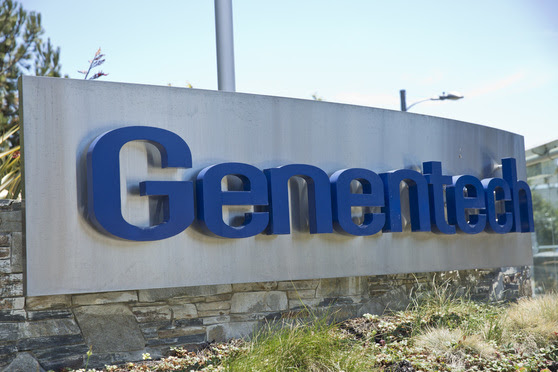
Who's Arguing?
Next week is a calendar week at the Federal Circuit. The court will hold telephonic hearings in about half of its cases. Here are a couple that caught my eye:
➤ C R Bard v. AngioDynamics. A jury trial in this medical device case ended abruptly last year after Bard completed its case-in-chief. U.S. District Judge Joseph Bataillon ruled that Bard hadn't presented enough evidence to show that its system for identifying a type of subcutaneous vascular port is eligible for patenting. "This case is done, kids. We're done. See you next time," Batailon told attorneys from Morrison & Foerster representing Bard and Cadwalader, Wickersham & Taft representing AngioDynamics. "I'll have an order so everybody can fight over it with the Federal Circuit later on."
That day arrives June 1, when MoFo appellate honcho Deanne Maynard will argue that Bard never even got a chance to defend the eligibility of its patents, and that Bataillon wrongly shifted the burden of proving eligibility onto Bard. Cadwalader special counsel Danielle Tully will argue that the trial can't be considered in isolation, outside of what Bataillon described as "exhausting" motion practice. "When trial revealed Bard's promises to be empty," Bataillon correctly ruled that the patents are directed to the mere labeling of the ports, which is neither novel nor patent-eligible, AngioDynamics says.
If it's anything like trial it should be entertaining. "Despite the fact that I granted directed verdict, it's been fun and you guys are great lawyers, and I appreciate the opportunity to practice with you," Bataillon told the "kids" on the Cadwalader and MoFo trial teams.
➤Genentech v. Immunex Rhode Island. Three months ago, I wrote about Genentech's failed attempt to enjoin Amgen from marketing a biosimilar version of its cancer treatment Herceptin. Genentech (aka Roche) will try again on June 3. This time it's looking to sideline Amgen's biosimilar version of Genentech's $3 billion-a-year cancer treatment Avastin.
Amgen began marketing its biosimilar Mvasi last July, almost two years after the FDA gave its approval and Amgen notified Genentech of its plans. That's comfortably beyond the 180 days' notice required by the Biologics Price Competition and Innovation Act. But Amgen supplemented its FDA application twice in August 2018—once to add a production facility in Rhode Island, and the second time to modify the Mvasi label. The FDA gave its final sign-off last June.
In Genentech's view, those supplements reset the 180-day notice requirement, which Amgen never met. The final version of Mvasi is "a new product made by a new manufacturing process, accompanied by a new label, and the subject of separate applications, FDA reviews, and FDA approvals," Genentech argued last summer to U.S. District Judge Colm Connolly. Connolly disagreed, pointing to FDA regs that define a supplement as a change to an already approved application.
Amgen adds that Genentech's last patent covering the Avastin antibody expired last July, making an injunction doubly pointless.
Williams & Connolly associate Luke McCloud will present Genentech's case. MoloLamken's Jeff Lamken will defend the judgment for Amgen.
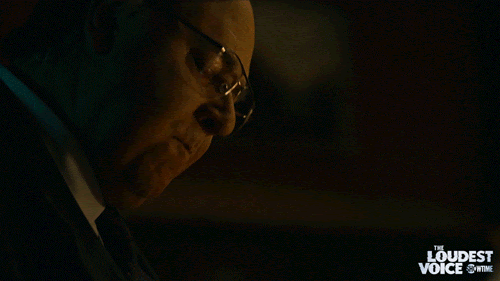
Who Got the Work?
➤ Fortinet Inc. v. Forescout Technologies Inc. This Silicon Valley showdown looks like NPE litigation in competitor clothing. Cybersecurity leader Fortinet acquired Bradford Networks and its Network Sentry family of security products in 2018. Now, it's asserting two patents acquired in that deal, plus a third that's homegrown, against Forescout, a competitor and former business partner.
"Fortinet is committed to protecting and the defending intellectual property that it and Bradford worked so diligently to develop," Fortinet's Skadden Arps Slate Meagher & Flom attorneys say in their May 15 complaint.
Fortinet says its two founders have built the company into a 7,000-employee, $23 billion colossus whereas Forescout recently agreed to be acquired by a private equity firm, which Fortinet predicts will result in reduced R&D spending. It says it tried to initiate licensing discussions with Forescout on Feb. 27—three whole months ago—but has continually been given the cold shoulder.
Skadden partners Jay Neukom and Douglas Nemec headline Fortinet's team, along with counsel James Pak and associates Rachel Blitzer and Leslie Demers. The case has been assigned to U.S. District Judge Edward Chen.
>Synopsys v. Real Intent. Another soured business partnership leads to IP litigation in the Northern District of California.
Electronic design automation company Synopsys says it began licensing several products to Real Intent solely for the purpose of developing, testing and supporting an interface with Real Intent products. As part of the license Real Intent agreed to submit to independent audits. But when Synopsys began suspecting copying and enforced that provision last year, it ended up receiving an audit with multiple redactions, Synopsys alleges in its April 23 complaint.
Synopsys is backed by Hogan Lovells partners Krista Schwartz, Patrick Michael, Aaron Oakley and senior associate Helen Trac. It's alleging copyright and patent infringement plus contract claims.
If a technology giant accuses you of copying a software interface, who are you going to call? Keker, Van Nest & Peters, of course! Partners Bob Van Nest, Brian Ferrall, Ryan Wong, and associates Kristin Hucek and Victor Chiu have entered appearances for Real Intent.
The case has been assigned to U.S. District Judge Charles Breyer.
That's all from Skilled in the Art this week. I'll see you all again next Friday.
This content has been archived. It is available through our partners, LexisNexis® and Bloomberg Law.
To view this content, please continue to their sites.
Not a Lexis Subscriber?
Subscribe Now
Not a Bloomberg Law Subscriber?
Subscribe Now
NOT FOR REPRINT
© 2025 ALM Global, LLC, All Rights Reserved. Request academic re-use from www.copyright.com. All other uses, submit a request to [email protected]. For more information visit Asset & Logo Licensing.
You Might Like
View All
Skilled in the Art With Scott Graham: I'm So Glad We Had This Time Together
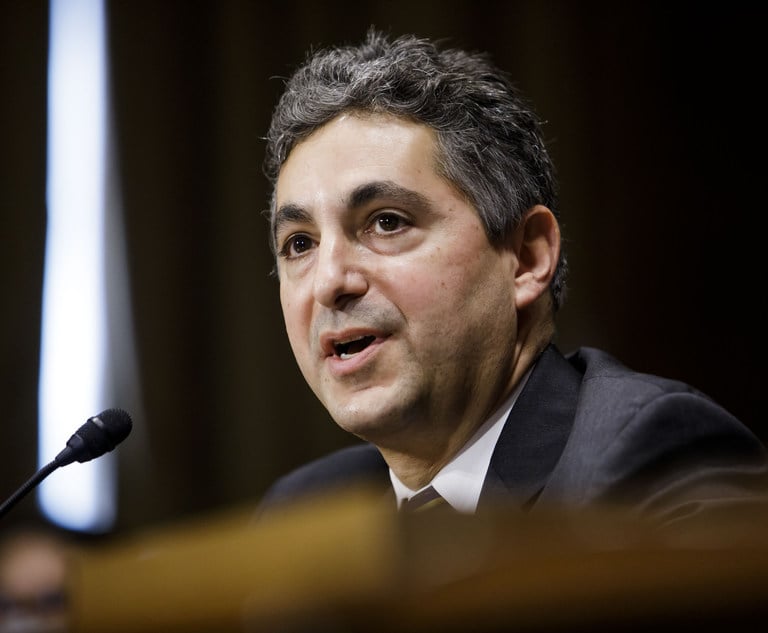
Design Patent Appeal Splinters Federal Circuit Panel + Susman Scores $163M Jury Verdict + Finnegan Protects Under Armour's House
Law Firms Mentioned
Trending Stories
- 1'It's Not Going to Be Pretty': PayPal, Capital One Face Novel Class Actions Over 'Poaching' Commissions Owed Influencers
- 211th Circuit Rejects Trump's Emergency Request as DOJ Prepares to Release Special Counsel's Final Report
- 3Supreme Court Takes Up Challenge to ACA Task Force
- 4'Tragedy of Unspeakable Proportions:' Could Edison, DWP, Face Lawsuits Over LA Wildfires?
- 5Meta Pulls Plug on DEI Programs
Who Got The Work
Michael G. Bongiorno, Andrew Scott Dulberg and Elizabeth E. Driscoll from Wilmer Cutler Pickering Hale and Dorr have stepped in to represent Symbotic Inc., an A.I.-enabled technology platform that focuses on increasing supply chain efficiency, and other defendants in a pending shareholder derivative lawsuit. The case, filed Oct. 2 in Massachusetts District Court by the Brown Law Firm on behalf of Stephen Austen, accuses certain officers and directors of misleading investors in regard to Symbotic's potential for margin growth by failing to disclose that the company was not equipped to timely deploy its systems or manage expenses through project delays. The case, assigned to U.S. District Judge Nathaniel M. Gorton, is 1:24-cv-12522, Austen v. Cohen et al.
Who Got The Work
Edmund Polubinski and Marie Killmond of Davis Polk & Wardwell have entered appearances for data platform software development company MongoDB and other defendants in a pending shareholder derivative lawsuit. The action, filed Oct. 7 in New York Southern District Court by the Brown Law Firm, accuses the company's directors and/or officers of falsely expressing confidence in the company’s restructuring of its sales incentive plan and downplaying the severity of decreases in its upfront commitments. The case is 1:24-cv-07594, Roy v. Ittycheria et al.
Who Got The Work
Amy O. Bruchs and Kurt F. Ellison of Michael Best & Friedrich have entered appearances for Epic Systems Corp. in a pending employment discrimination lawsuit. The suit was filed Sept. 7 in Wisconsin Western District Court by Levine Eisberner LLC and Siri & Glimstad on behalf of a project manager who claims that he was wrongfully terminated after applying for a religious exemption to the defendant's COVID-19 vaccine mandate. The case, assigned to U.S. Magistrate Judge Anita Marie Boor, is 3:24-cv-00630, Secker, Nathan v. Epic Systems Corporation.
Who Got The Work
David X. Sullivan, Thomas J. Finn and Gregory A. Hall from McCarter & English have entered appearances for Sunrun Installation Services in a pending civil rights lawsuit. The complaint was filed Sept. 4 in Connecticut District Court by attorney Robert M. Berke on behalf of former employee George Edward Steins, who was arrested and charged with employing an unregistered home improvement salesperson. The complaint alleges that had Sunrun informed the Connecticut Department of Consumer Protection that the plaintiff's employment had ended in 2017 and that he no longer held Sunrun's home improvement contractor license, he would not have been hit with charges, which were dismissed in May 2024. The case, assigned to U.S. District Judge Jeffrey A. Meyer, is 3:24-cv-01423, Steins v. Sunrun, Inc. et al.
Who Got The Work
Greenberg Traurig shareholder Joshua L. Raskin has entered an appearance for boohoo.com UK Ltd. in a pending patent infringement lawsuit. The suit, filed Sept. 3 in Texas Eastern District Court by Rozier Hardt McDonough on behalf of Alto Dynamics, asserts five patents related to an online shopping platform. The case, assigned to U.S. District Judge Rodney Gilstrap, is 2:24-cv-00719, Alto Dynamics, LLC v. boohoo.com UK Limited.
Featured Firms
Law Offices of Gary Martin Hays & Associates, P.C.
(470) 294-1674
Law Offices of Mark E. Salomone
(857) 444-6468
Smith & Hassler
(713) 739-1250



